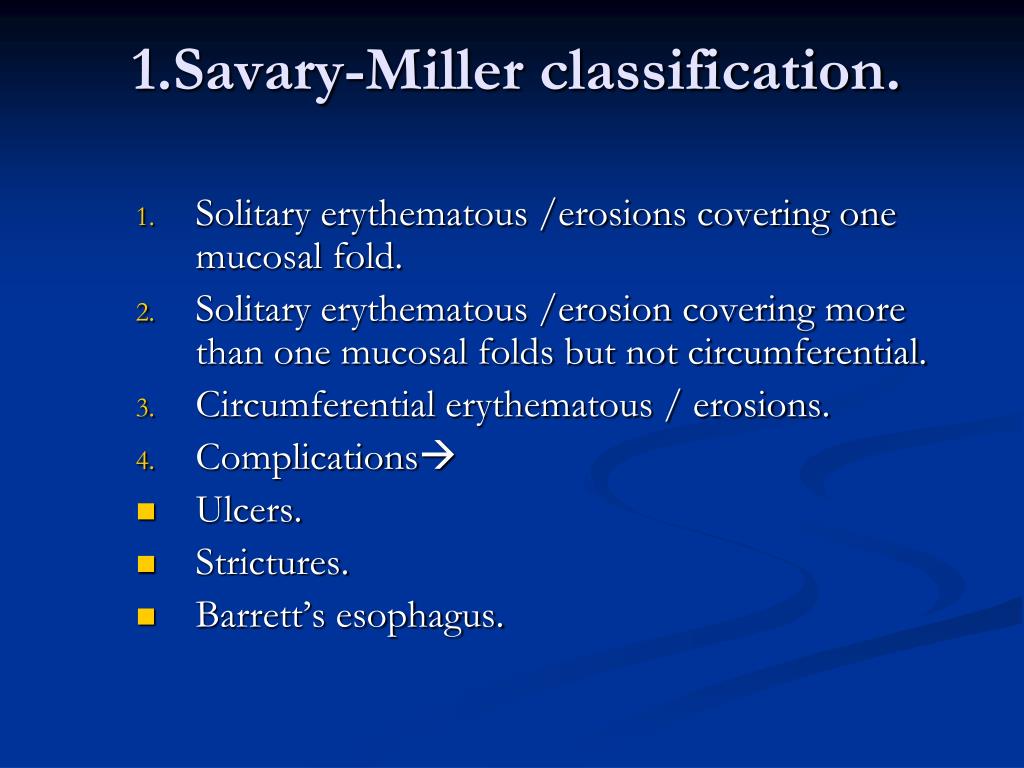Gastro-esophageal reflux disease (gerd) is most commonly diagnosed based on the symptoms typical symptoms include heart burn, acid regurgitation and difficulty in swallowing grade 4: ulcer. Grade 4 gastroesophageal reflux. Gastroesophageal reflux disease, or gerd, is a digestive disorder that affects the lower esophageal sphincter (les), the ring of muscle between the esophagus and stomachmany people, including.
grade 4 gastroesophageal reflux
Grade 1: single or multiple erosions on a single fold erosions may be exudative or erythematous grade 2: multiple erosions affecting multiple folds erosions may be confluent grade 3: multiple circumferential erosions grade 4: ulcer, stenosis or oesophageal shortening grade 5: barrett's epithelium columnar metaplasia in the form of. Gastroesophageal reflux disease (gerd) is a chronic condition in which retrograde flow of stomach contents into the esophagus causes irritation to the epithelial lining. reflux episodes are primarily caused by inappropriate, transient relaxation of the lower esophageal sphincter ().risk factors include smoking, alcohol consumption, stress, obesity, and anatomical abnormalities of the. Eat smaller and more frequent meals, rather than 3 large meals a day – don't eat or drink alcohol within 3 or 4 hours before going to bed, and avoid having your largest meal of the day in the evening. avoid anything you think triggers your symptoms – common triggers include coffee, chocolate, tomatoes, alcohol, and fatty or spicy food..

